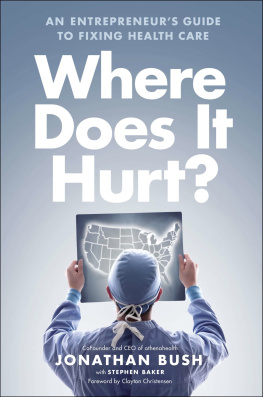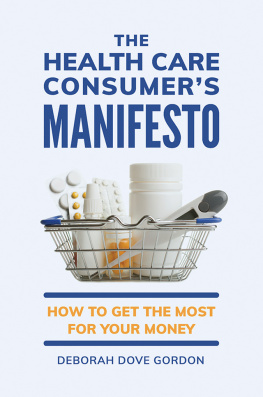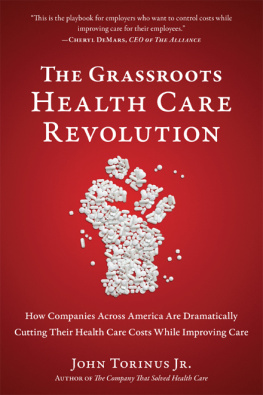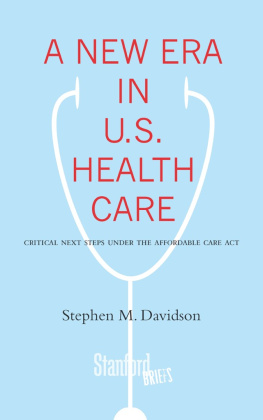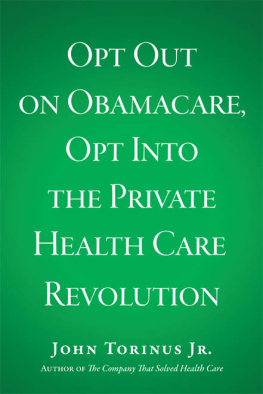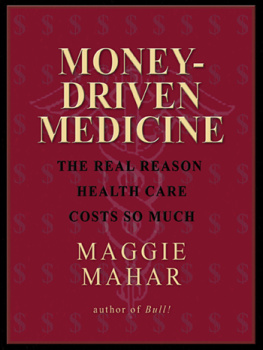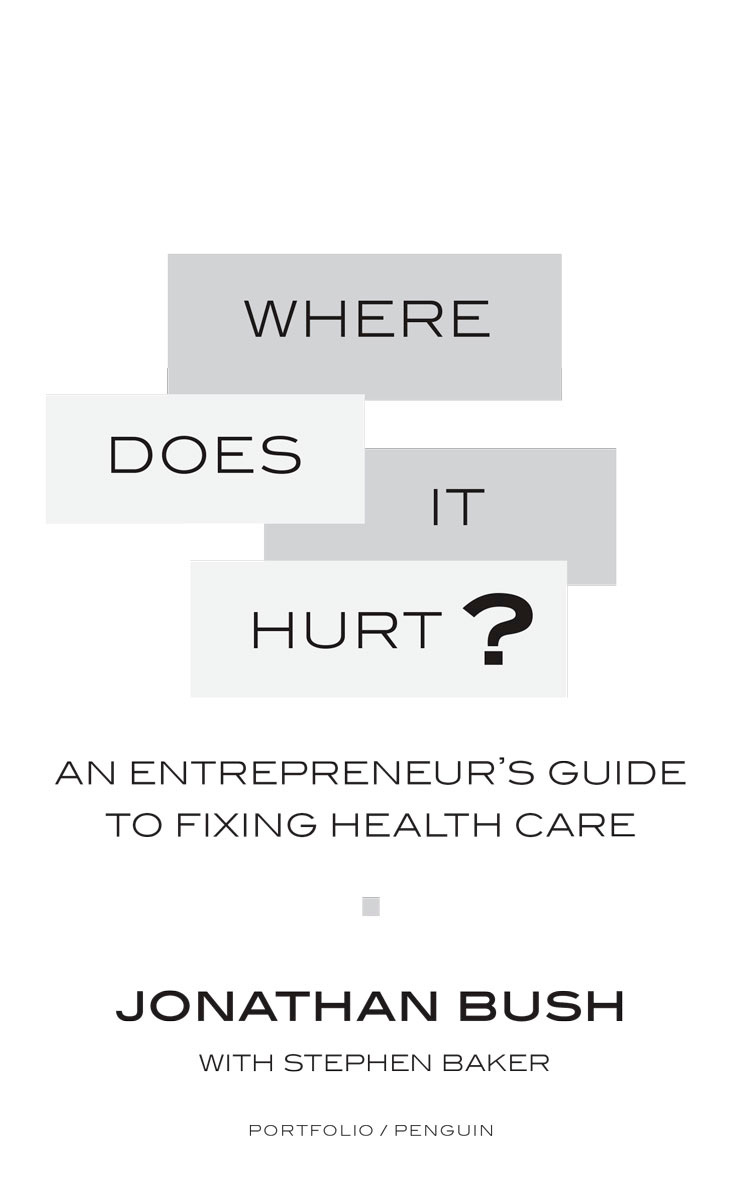FOREWORD

This is one of the most important and engaging books about health care I have ever read. I love Jonathans ideas, of course, but it is his perspective that is so unique. My books examine problems from a rarefied, conceptual, top-down perspective. Jonathans perspective on heath care occurs from the bottom up. It is refreshing. Over the years, he has been an ambulance driver, an army medic, and a consultant. He has seen firsthand the local and national politics of health care. He was initially a failed entrepreneur with a great idea, covered with scabs and wounds from wringing out reimbursements from insurance companies and wrestling with the status quo. Now Jonathan is the successful CEO of a marvelous and important health care IT company.
Let me offer an analogy for what Jonathan brings to the discussions about curing our health care system. For much of the 1800s in America where there ostensibly was freedom of religion, tens of thousands of members of the Mormon Church were persecuted: hunted, killed, and driven from their farms and homes. To escape this persecution their leaders led them to the uninhabited desert in the West, where they hoped they could worship as they chose. The exodus of these good peoplepenniless because they had been stripped of their possessions by their persecutorsis one of the most gripping episodes in the history of America. They organized themselves into companies of hundreds, so they could protect and help each other deal with the never-ending dangers they faced on the trail. Four of my great-grandparents made this trek, walking across the plains with their food and possessions in a covered wagon or a two-wheeled handcart.
In 1947, to commemorate the hundredth anniversary of the first company of pioneers entering into the Salt Lake Valley, a leader of our church, J. Reuben Clark, gave a powerful talk entitled To Them of the Last Wagon. He observed that almost all of the historical accounts of the exodus took the perspective of the leaders who were at the front of the long trains of wagons. To them, the air was clear and the wind from the western plains cooled their sweaty brows on sultry July afternoons. When they came across a knoll they could stop the company so that the leaders could survey what lay ahead. To those of the last wagon, however, the journey was decidedly different. Every day consisted of breathing the dust raised by scores of wagons in front of them. They walked twenty miles daily through the manure deposited by hundreds of oxen that were pulling the wagons ahead of them. They were last because the ox team that pulled their wagon was the smallest and leanest and weakest. But when those in the last wagon saw a broken wagon ahead on the trail, they instinctively offered their help. When the last wagon broke, or they were sick, or an ox went lame, however, most of the rest of the company didnt notice because they were looking at their own problems ahead. The heartache, determination, courage, and perspective of those in the last wagon were very different from the experience of the leaders at the front.
In Where Does It Hurt? Jonathan chronicles the people who occupy the last wagon in health care. These are the patients who dont have access to the best care. They are caregivers and entrepreneurs who could give so much more and better care than they are allowed if they werent chained to a broken system. Those in the first wagon write the legislation and regulation. They debate health care in courts and legislatures. Many of their compromises and side deals fill the air with self-centeredness, complexity, ambiguity, overhead costs, and contested, delayed, and partial reimbursement. The lives of those in the last wagon are very different from the visionaries in the front.
Thankfully, Jonathan has experience driving wagons in both the back and the front. He has a wonderful perspective of the entire wagon train. Jonathan has dedicated his life and his company to helping those of the last wagon in health care do their jobs in the best way possible and creating new opportunities for those entrepreneurs who are willing to take risks.
I love to listen to Jonathan talk: His narratives come a mile per minute. His illustrations and metaphors help me envision the problems and their solutions clearly. And he is very, very funny. You will be able to hear Jonathans voice as you read this book. It is an easy, insightful, and entertaining read.
Jonathan, thank you for writing this bookfor what it says and how you say it.
Clayton Christensen, Harvard Business School
JANUARY 2014
INTRODUCTION

Its a steamy summer night in New Orleans in 1990. Im twenty-one years old and gunning an ambulance down Bienville Avenue, toward Charity Hospital. My uncle is president of the United States and my cousin will take over the same job in a decade. Big things are expected of me. But Ive always had trouble succeeding along traditional Bush family lines. Surrounded by a brother and cousins who are outstanding athletes, I have trouble throwing and catching. Im also dyslexic and struggle at school. I fidget in classrooms, and my mind wanders. So now, between my sophomore and junior years of college, Im exploring a new path. It involves doing good by running red lights and crashing through windshields to rescue people. I love it.
Charity Hospital has what is widely considered a crack trauma unit, perhaps the best in the country. Located in the heart of Americas murder capital, the New Orleans team gets loads of do-or-die practice. But the seventy-five-year-old man stretched out behind me right now isnt an emergency case. He just feels bad. I think he has high blood pressure. The shootings every night in his neighborhood cant help. So he called 911. He met us on his stoop, fully dressed and carrying an overnight bag. He is taking what amounts to a $400 cab ride paid for by Medicaid. (I joke that Im driving a

